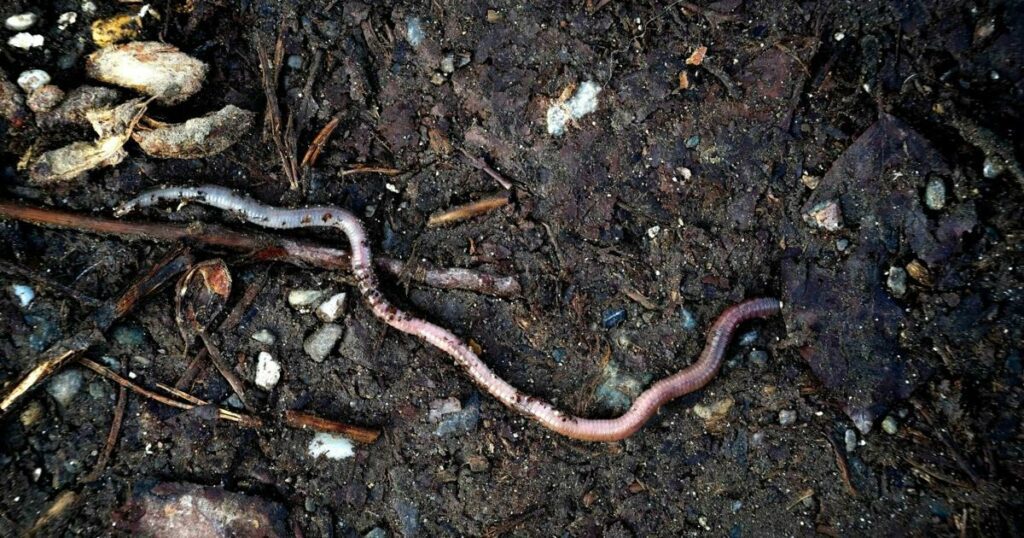Even before I started gardening as a teenager in my New York suburb, I had been taught to regard earthworms with an almost holy awe.
I probably learned this from my gardener mother. In any event, I had somehow learned that earthworms were custodians of the soil, aerating it with their tunnels and enriching it by consuming organic debris on the soil surface, digesting it and excreting it in their castings in a form nutritious to plants. Earthworms were an unqualified good.
Or so I believed, until I began talking to ecologists fairly late in my horticultural career. They informed me that earthworms were not native to the northern third of North America — they had all been exterminated thousands of years ago by the ice sheets of the last ice age.
COLONIAL ARRIVALS
The earthworms I had been taught to revere were relatively recent arrivals. They had come to our region in the soil of plants imported by early European colonists or perhaps in soil that had been shoveled into the hulls of colonial sailing ships to serve as ballast. To make room for cargo on the return trip, the soil ballast (with its earthworm hitchhikers) was often dumped on the North American shore. These new arrivals were welcomed by the colonists who rightly believed that they would benefit the growth of their Old World food crops which had coevolved with them. However, the earthworms impact — the changes they wrought in the soil ecology by consuming and redistributing organic debris— must have disrupted the growth and reproduction of many native plants, but that was not a concern at the time.
What I didn’t realize until recently was that this transformation of the Northeastern soil by worms was not just an event of the distant past. A couple of months ago, I came upon an article published in February of this year by Jérôme Mathieu, Ph.D., a soil ecologist at the Sorbonne University in Paris, and his North American colleagues in “Nature Ecology & Evolution.”
‘JUMPING WORMS’
I had been aware that a recent arrival, “jumping worms” from Eastern Asia, was having a bad effect on the flora of North America’s northern forests. However, I was unprepared for the news contained in Mathieu’s study of local reports concerning earthworm sightings throughout North America. By tracking down and compiling some 600 such observations, they found that a total of more than 70 earthworm species have invaded North America and that the bulk had arrived and spread after World War II.
Mathieu explained to me that the post-war expansion of global trade and air transportation was responsible for this subterranean population boom. Like the Colonial worms, these more recent arrivals were mostly inadvertent. Their rapid spread throughout our national landscape, however, was often deliberate. Some had been sold as fishing worms, which anglers often dumped out onto the ground at the end of the day. Others had been purchased as egg casings, “cocoons,” by farmers anxious to introduce them into their fields. I suspect that gardeners also played a role, as I know of instances in which mail-order plants were responsible for introducing jumping worms into the customers’ gardens.
DANGER TO FORESTS
The danger these recent arrivals pose to our northern forests is acute, according to Mathieu. Many have demonstrated a voracious appetite for the litter of fallen leaves and other debris that covers the woodland floor. I myself have seen the devastating consequences of this. A couple of years ago, I went for a hike in a forest preserve in New York City where there was no litter on the forest floor, just an expanse of bare, granular soil that looked like coarse coffee grounds. Scuffing this with my hiking boot exposed clusters of large, thrashing worms. Another thing lacking in this forest was any sort of plant understory. There weren’t even tree seedlings growing up to replace the aging existing trees.
Unfortunately, there is as yet no practical way to control earthworms once established, although some soil ecologists have begun to research this. In the meantime, the best defense is to limit plant purchases to responsible nurseries and avoid plant exchanges unless you know the donors’ soils are clean. Buy compost only from producers who hot compost, heating materials to at least 105 F. And, of course, don’t dispose of fishing worms at the streamside, dump them in the trash back home. So far, such precautions are the only way to protect our local forests.
Thomas Christopher is a volunteer at Berkshire Botanical Garden and is the author or co-author of more than a dozen books. His companion broadcast to this column, Growing Greener is available at berkshirebotanical.org/growinggreener.
Source link : http://www.bing.com/news/apiclick.aspx?ref=FexRss&aid=&tid=66cf3b2982184d5c9bbb9d24e6a3f24f&url=https%3A%2F%2Fwww.berkshireeagle.com%2Farts_and_culture%2Fhome-garden%2Fthomas-christopher-be-a-better-gardener-jumping-worms-invasive-worms%2Farticle_eb3d12ec-6482-11ef-8564-a37a741e8bac.html&c=11323231819099679488&mkt=en-us
Author :
Publish date : 2024-08-28 03:00:00
Copyright for syndicated content belongs to the linked Source.
